While many might view snakes with trepidation, those who welcome these fascinating reptiles into their homes discover a world of endearing behaviors and unique personality traits that defy common stereotypes. Snake ownership reveals a side of these creatures that casual observers rarely glimpse—the charming idiosyncrasies that transform them from mysterious predators into beloved pets with distinct preferences and habits. From their peculiar sleeping positions to their curious explorations, these cold-blooded companions display a warmth of character that only their dedicated owners fully appreciate. This article celebrates the special moments and behaviors that create the unique bond between snakes and their human caretakers.
The Periscope Position: Snakes as Curious Observers
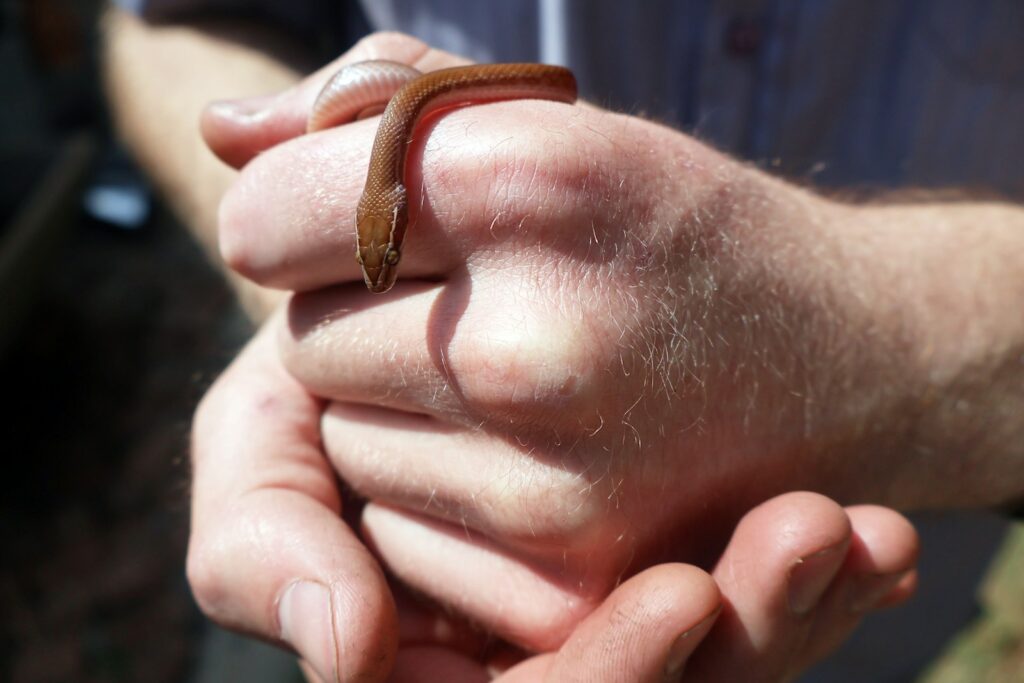
One of the most endearing behaviors snake owners cherish is what many affectionately call the “periscope” position. When particularly interested in their surroundings, many snake species will raise the front third of their bodies vertically, creating a submarine-like periscope appearance as they survey their environment. This behavior isn’t just functional—it’s undeniably cute, as the snake sways slightly while taking in the sights and scents around them. Ball pythons and corn snakes are especially prone to this charming behavior when they’re feeling secure yet curious. Owners often find themselves smiling as their serpentine companion rises up to get a better view of household activities or to inspect a new item in their enclosure.
The “Face Boop” Phenomenon

Snake owners quickly become familiar with what the community lovingly calls “booping the snoot”—that gentle touch to a snake’s nose that often elicits an adorable reaction. Many snakes respond to this face boop by slightly retracting their heads or giving a surprised expression that seems almost cartoonish in its charm. This interaction highlights the sensitive nature of their snouts, which contain heat-sensing pits in some species like pythons and boas. Experienced owners know that while it might seem like a simple act, the face boop actually represents a moment of trust between keeper and snake. Regular handling sessions often include these gentle boops, reinforcing the unique bond that develops between snakes and their dedicated caretakers.
The Mysterious Case of the Disappearing Snake

Every snake owner has experienced that moment of panic when their pet appears to have vanished into thin air, despite being in a seemingly secure enclosure. These masterful escape artists can compress their bodies to fit through gaps seemingly impossible for their size, leading to frantic searches behind furniture, inside appliances, or within the warmest nooks of a home. What makes this quirk endearing (after the snake is safely recovered) is discovering your pet’s preferred hiding spots—often in the most unlikely places like sock drawers or inside pillowcases. Veteran snake keepers eventually learn to snake-proof their homes and develop an almost sixth sense for where their particular serpent might have slithered off to. Many owners report finding their “missing” snake curled up in the same spot repeatedly, revealing their pet’s creature of habit nature despite their adventurous escapes.
Yawning: Not Just for Mammals
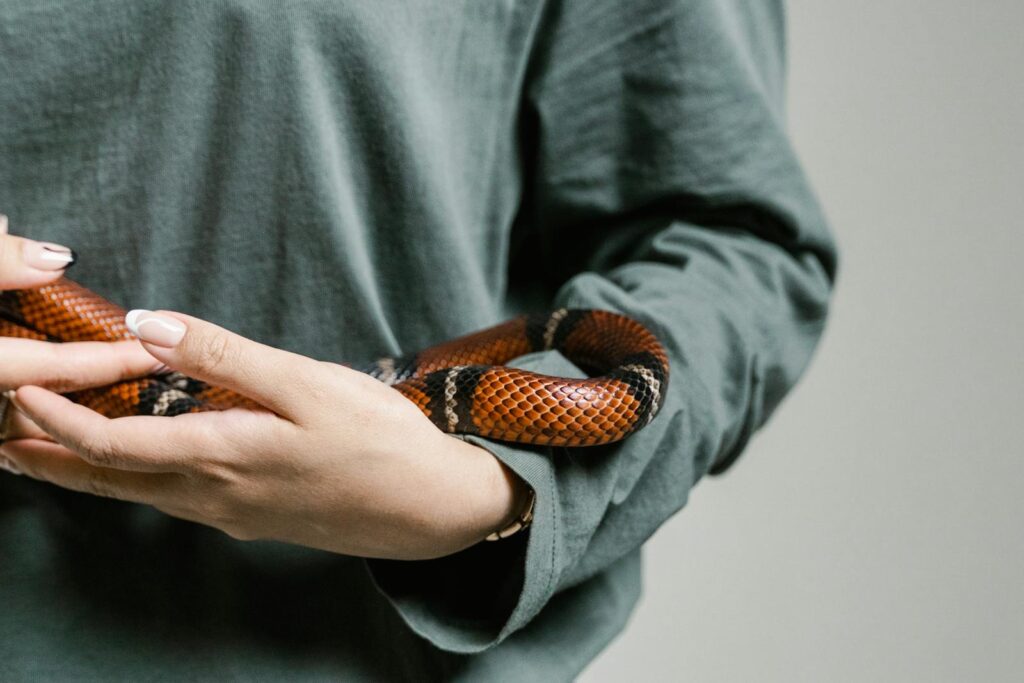
One of the most surprising and adorable behaviors that delight snake owners is witnessing their pet mid-yawn. Unlike mammalian yawning, snake “yawns” (technically called mouth gaping) serve to realign their jaws after eating or to gather chemical information about their environment. The sight of a snake unhinging its jaw in a massive stretch, sometimes accompanied by a tongue flick, never fails to elicit smiles from besotted owners. These yawns can appear almost comical, especially in smaller species like corn snakes or king snakes, as their entire head seems momentarily transformed. Experienced keepers learn to distinguish between normal realignment yawns and stress-related mouth gaping, understanding that this quirky behavior offers insight into their pet’s health and comfort level.
Spaghetti Mode: The Art of Snake Relaxation
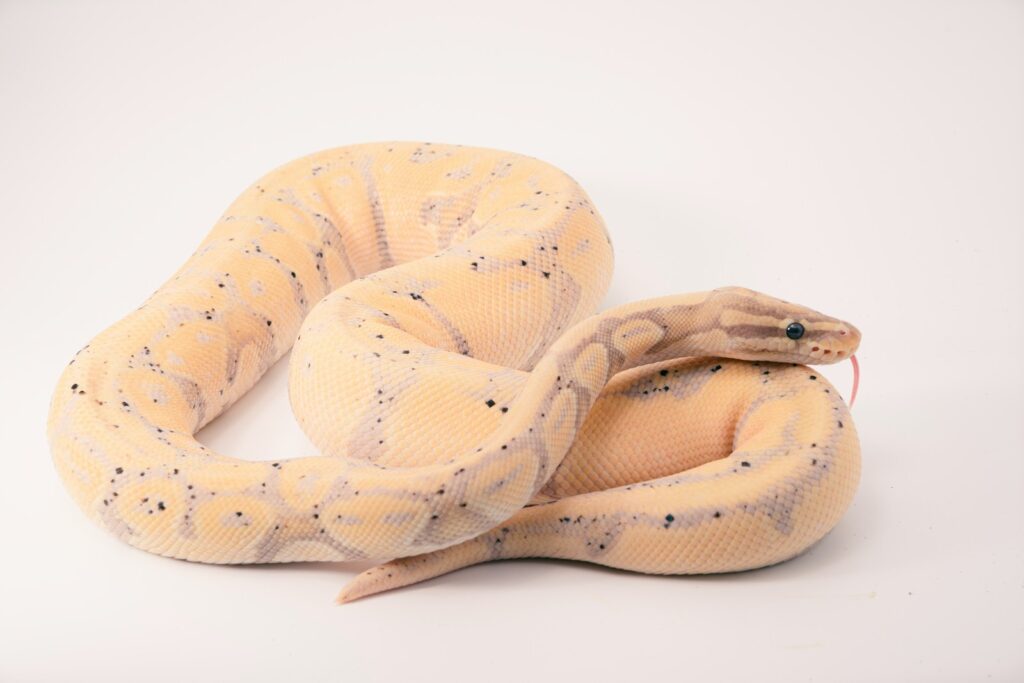
Snake owners affectionately refer to their pets’ most relaxed state as “spaghetti mode”—when the normally muscular, alert animal transforms into a completely limp, noodle-like creature during handling sessions. This ultra-relaxed state indicates a snake that feels utterly secure and comfortable with its handler. During spaghetti mode, snakes may drape themselves across hands and arms with complete abandon, showing none of the tension or alertness they exhibit when feeling threatened. For many owners, achieving this level of trust with their pets represents a significant milestone in their relationship. Experienced keepers can often tell their snake’s mood within seconds of handling them, simply by feeling whether they’ve entered this delightfully floppy state of reptilian zen.
The “I’m a Plant” Disguise
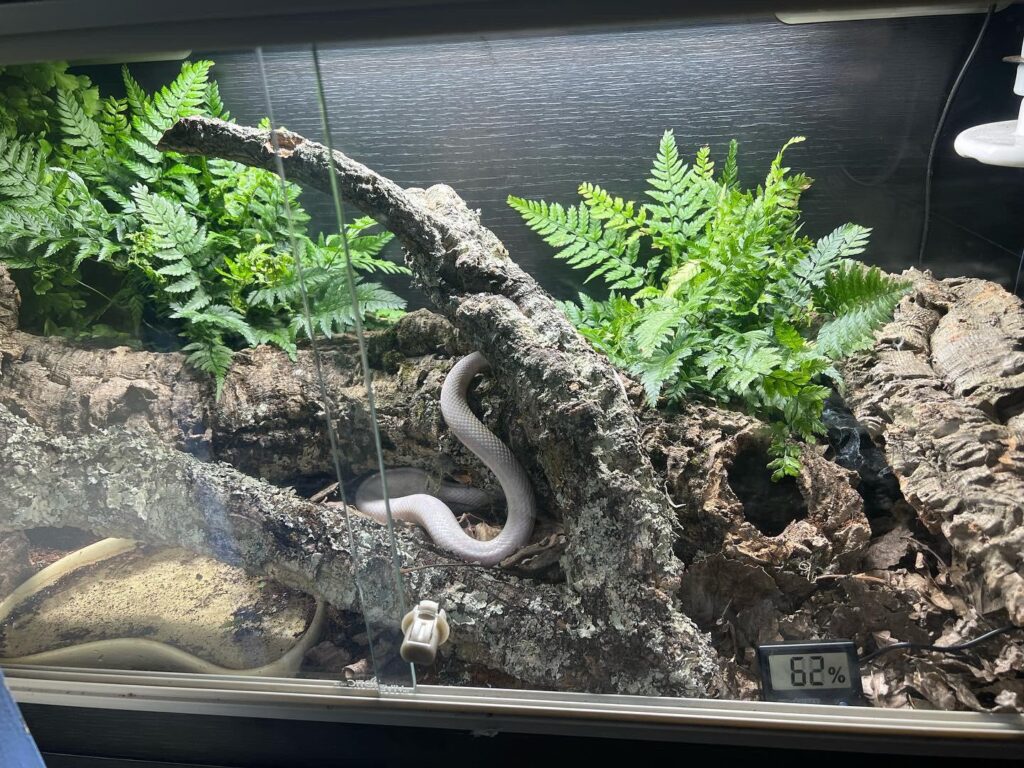
Snake owners frequently observe their pets adopting what appears to be plant-mimicking positions, particularly species with arboreal tendencies like green tree pythons or emerald tree boas. These snakes will arrange themselves in perfect coils on branches, remaining so still they resemble part of the vegetation. What makes this behavior especially endearing is catching the occasional subtle head movement as the “plant” tracks its owner’s movements around the room, revealing the alert predator beneath the convincing disguise. This behavior showcases the snake’s natural camouflage instincts even in captivity. Owners come to appreciate these moments of evolutionary adaptation playing out in their living rooms, offering glimpses of behaviors that would normally be reserved for deep rainforest observation.
Dinner Time Dances and Pre-Strike Wiggles
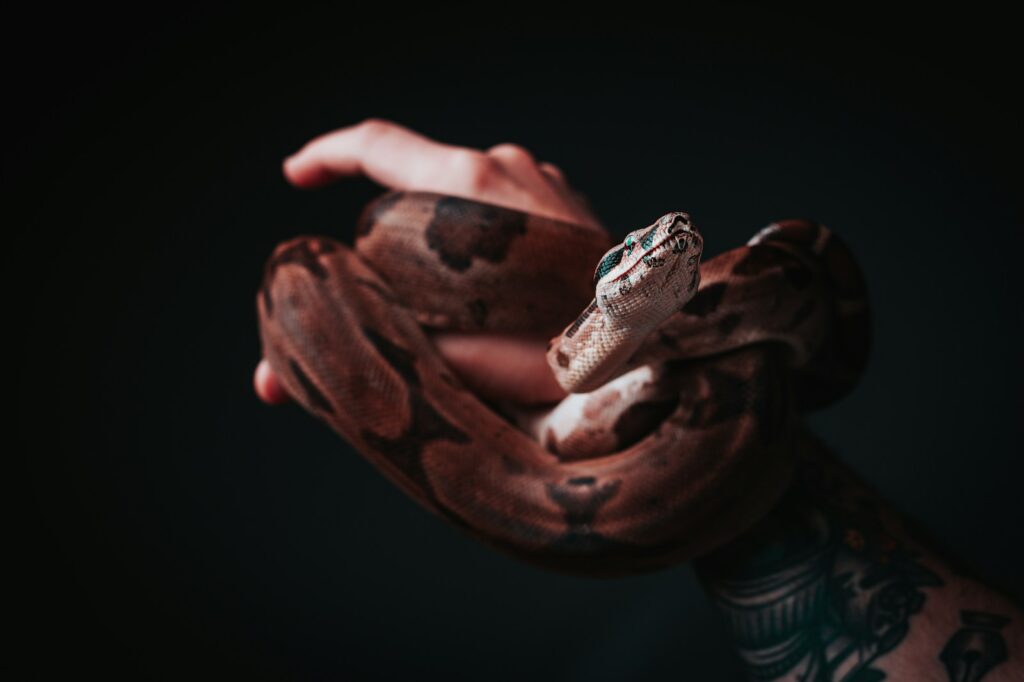
Few behaviors capture a snake owner’s attention quite like the fascinating pre-feeding rituals many species display. From the gentle, rhythmic swaying of rat snakes to the notorious “wiggle dance” that ball pythons perform before striking at prey, these movements represent hunting strategies refined over millions of years of evolution. What makes these behaviors endearing to owners is their predictability and enthusiasm—many snakes begin their feeding rituals the moment they detect food, even before it’s offered. Experienced keepers come to recognize their individual snake’s unique variation of these dances, with some pets developing signature moves that announce their feeding intentions. These behaviors provide a fascinating window into natural predatory behaviors that most people never witness, making feeding time an educational and entertaining experience for dedicated snake enthusiasts.
The Peculiar Art of Snake Sneezing
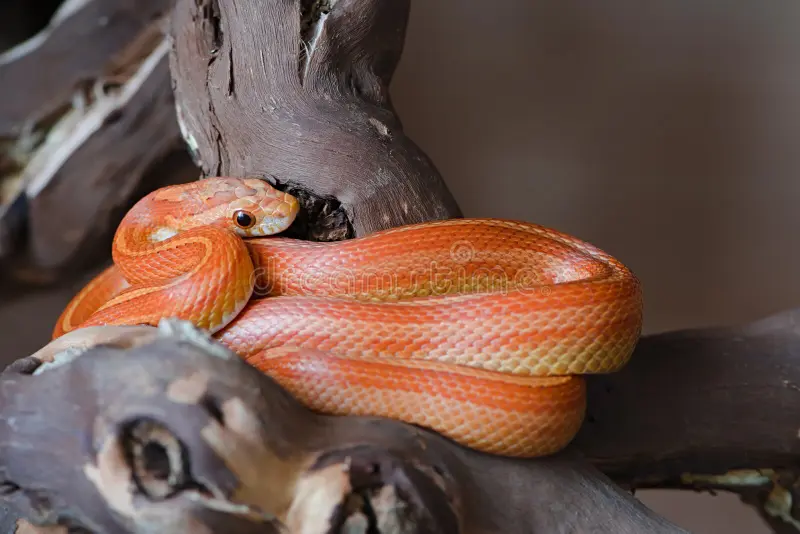
When a snake makes a sudden, sharp exhale through its nostrils—sometimes accompanied by a tiny mist—owners are witnessing what’s affectionately called a “snake sneeze.” These surprising little expulsions help snakes clear their respiratory passages of dust, water, or debris. The sound, a soft “pfft” that seems impossibly delicate coming from a predator, never fails to charm owners catching this rare behavior. First-time snake keepers often panic upon witnessing their first snake sneeze, rushing to forums to confirm this is normal behavior. Experienced owners, however, recognize these occasional sneezes as part of healthy respiratory function, though frequent sneezing warrants veterinary attention as it could indicate a respiratory infection.
Heat-Seeking Behavior: The Eternal Quest for Warmth
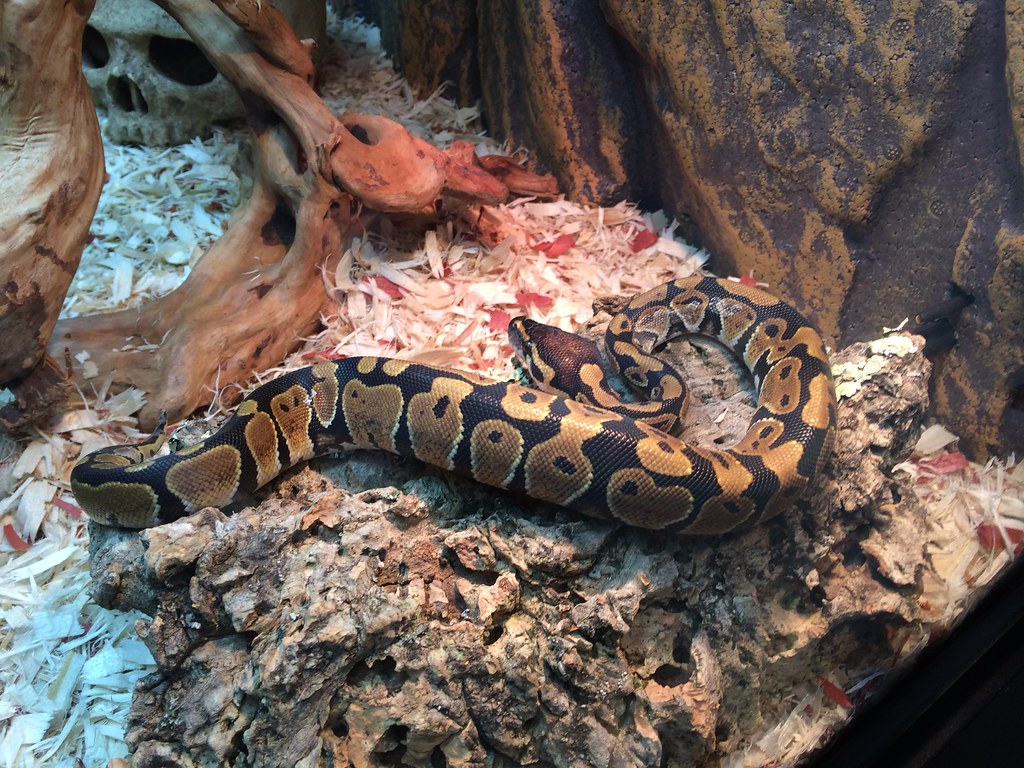
Snake owners quickly learn that their cold-blooded companions possess an almost supernatural ability to detect and migrate toward the warmest spots in their environment—including their human body heat. This heat-seeking behavior manifests in adorable ways, such as snakes who stubbornly refuse to leave shirt pockets, snakes who coil directly over a keeper’s heart during handling, or those who slither straight up sleeves, seeking the warmth of armpits. What makes this behavior particularly endearing is the determination with which even the smallest snake will repeatedly return to a preferred warm spot, sometimes fighting gentle redirection with surprising persistence. Many owners report their snakes developing favorite warm perches on their bodies during handling sessions, with some reptiles returning to the exact same position time after time.
The Mysterious Case of the Snake Sploot
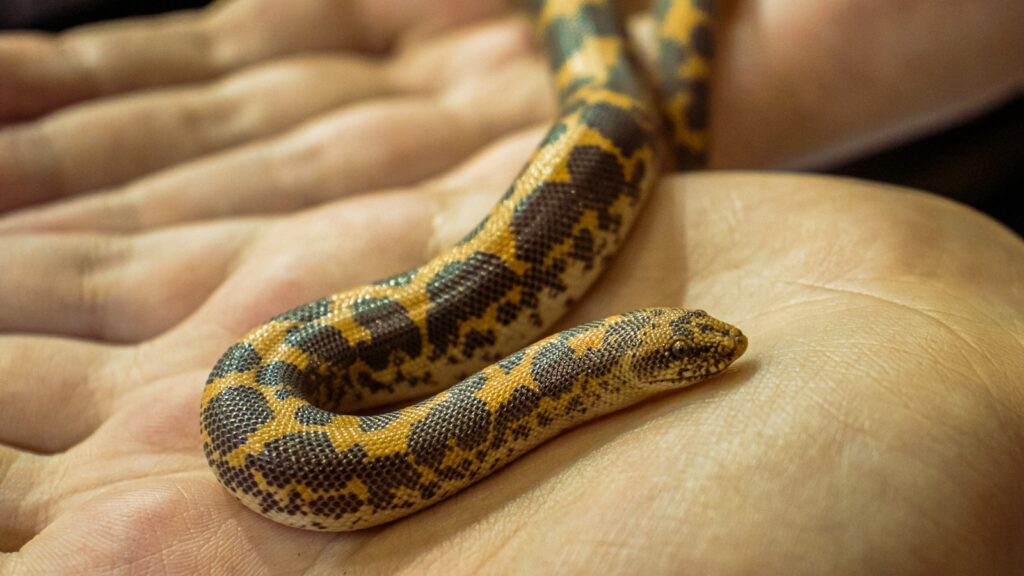
Snake enthusiasts have coined the term “sploot” to describe when their pet flattens its body against a surface, typically to maximize heat absorption or to cool down, depending on the surface temperature. This behavior creates an adorably flattened appearance, almost as if the snake is trying to increase its surface area as much as physically possible. Ball pythons are particularly known for their impressive sploots, sometimes flattening to nearly twice their normal width when basking under their heat lamp. Owners find this behavior especially endearing when their snake sploots in unusual locations or positions, such as pressed perfectly flat against the glass of their enclosure or splayed dramatically across a favorite basking rock. The sploot reveals the fundamentally pragmatic nature of snakes—these efficient creatures will alter their entire body shape in pursuit of optimal temperature regulation.
Tongue Flicks: The Language of Snake Curiosity
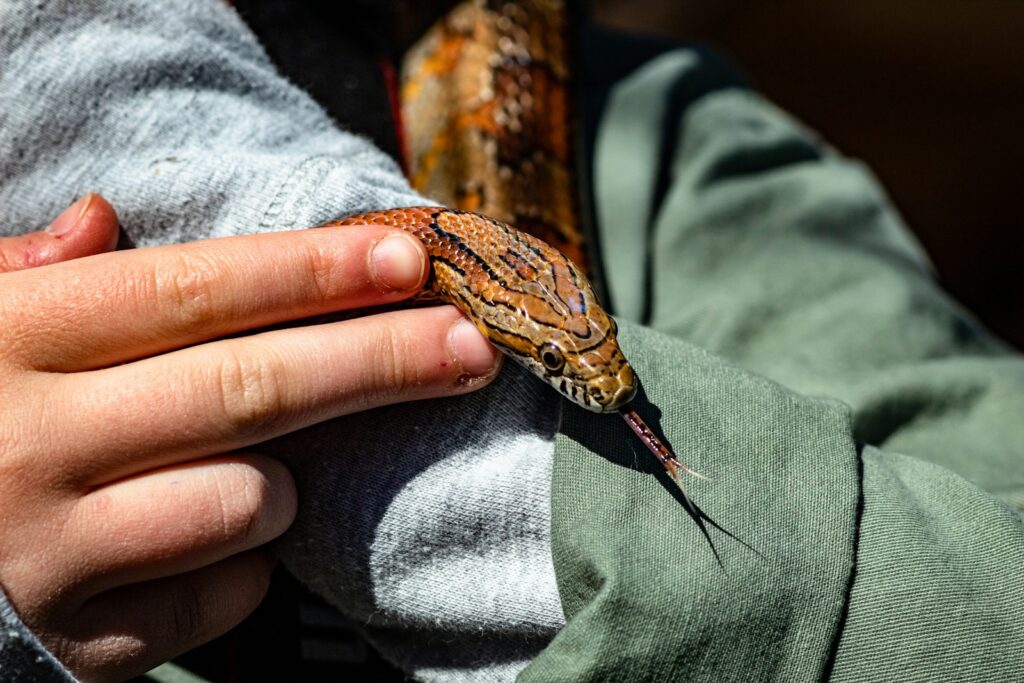
The rapid tongue flicking that snakes display might seem ordinary to casual observers, but owners learn to read these movements like a sophisticated communication system. Different patterns, speeds, and directions of tongue flicks can indicate everything from casual investigation to intense interest or anxiety. Particularly charming are the excited, rapid-fire tongue flicks that some snakes display when encountering a new smell or returning to their enclosure after handling. Owners often develop a deep appreciation for how their snake “tastes” the world, using their forked tongues to collect chemical information and transfer it to their Jacobson’s organ for processing. Many keepers report feeling a special connection when their snake directs deliberate, gentle tongue flicks toward their skin—a sign the snake is familiarizing itself with its owner’s scent.
The “Perpetually Surprised” Expression

Certain snake species, particularly those with prominent brow scales like blood pythons or characteristic head shapes like hognose snakes, appear to wear permanent expressions of surprise, skepticism, or concern. These anthropomorphized “expressions” become a source of endless amusement for owners, who often photograph their pets at just the right angle to capture their seemingly judgmental or astonished faces. What makes this quirk particularly endearing is how these facial features can seem to perfectly match a snake’s behavior at any given moment—from a hognose’s dramatic defensive display to a ball python’s cautious exploration of a new environment. Many snake owners maintain collections of photos capturing their pet’s most expressive moments, sharing these “emotional” snapshots with fellow enthusiasts who immediately understand the charm. Despite knowing snakes don’t actually express emotions through facial movements like mammals, owners can’t help but assign personalities that match these permanent expressions.
The special quirks that snake owners come to recognize and cherish in their scaly companions reveal the surprising depth of connection possible with these often misunderstood animals. While snakes may not display affection in ways familiar to dog or cat owners, their unique behaviors and individual personalities create meaningful bonds that reptile enthusiasts treasure. From their comical yawns to their determined heat-seeking missions, these endearing traits transform snakes from simple pets into complex individuals with preferences, habits, and yes—undeniable charm. As any devoted snake keeper will attest, understanding these subtle quirks doesn’t just enhance the reptile-keeping experience—it opens a window into an ancient world of reptilian behavior that most people never have the privilege to witness.





